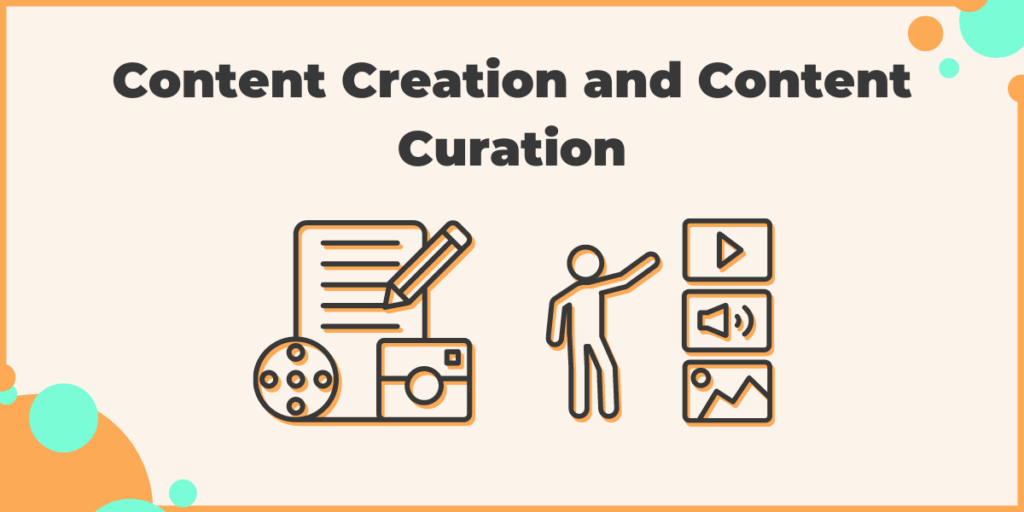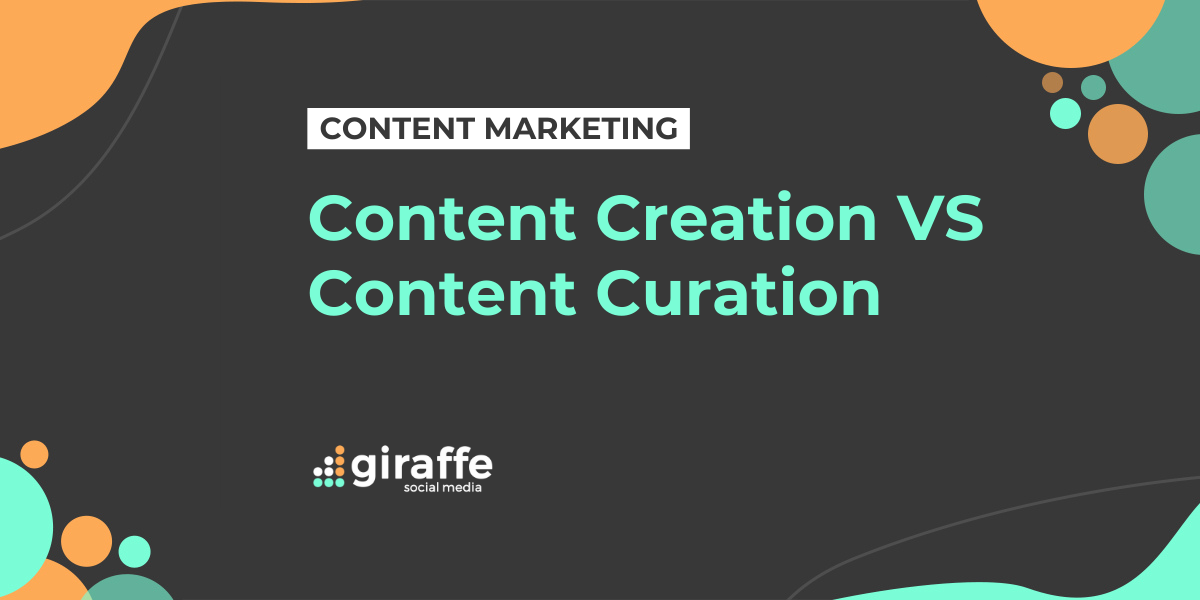Content is an integral part of a social media marketing strategy and, when executed well, can help you achieve your social media goals. From educational Facebook posts to hilarious GIF-filled tweets to thousand-word articles, there is a range of content available from brands online. However, there is an ongoing debate about content creation vs curation for social media and how brands can utilise these two content types.
But what do ‘content creation’ and ‘content curation’ mean?
What is Content Creation?
Created content is original content created and distributed by your business (or by an agency posting on your behalf). This content is created and owned by the business that distributed it. It can feature original photography and videos, or stock assets approved for redistribution without credit. It’s important, in the case of stock assets, to carefully check the licence terms and conditions to ensure that you’re allowed to use the images as if they were your own.
What is Content Curation?
Curated content is content you share from external sources that you do not own and cannot claim as your own. Examples include posting links to news/industry articles on your Facebook page, or tweeting quotes from industry thought leaders. Posting curated content will normally involve acquiring permission to repost on your social channels and, unless agreed otherwise, giving credit to the original owner/creator.
The Pros and Cons of Curated and Created Content
Created Content – Pros
Created content can improve brand awareness and recognition, as well as demonstrating you as a thought leader and expert in your field. Created content is unique and boosts credibility, often putting you ahead of your competition. Original pieces create relationships with your audience and help to drive traffic to your website and social profiles. You also have complete control over the content, meaning you can have a consistent tone and tailor every post to your brand.
The Flightmedia blog lists five key benefits of content creation across social media, your website, and multimedia: “becoming a content expert; getting more traffic; saving more to share on social media; staying top-of-mind for prospects; validating your customers’ decision to buy from you.”
On your website, created content can help your SEO rankings as Google is known to prefer high-quality, original content over unoriginal, shared pieces. Google favours those that share information first, so brands that write their own articles will likely rank higher in search engines.
Created Content – Cons
Creating content also comes with some disadvantages. Creating original content takes time, effort, and money whether you’re creating in-house, using an agency, or a combination of both.
Paying for professional software to create content can be a big cost, especially for small businesses where every penny counts. Even alternatives to software like Adobe Photoshop often come with a monthly or annual subscription for business use.
Posting solely created content could come across as overly self-promotional or ‘salesy’. It’s not a good idea to only post about your products or services; your content should bring value to your audience with educational, informative, and industry-relevant posts.
Curated Content – Pros
Curated content is typically quicker and easier to share. User-generated content and sharing links to industry articles are easy to acquire but useful and valuable to your audience. It can also be time and cost-effective, as you can build a catalogue of relevant content ready to share.
Not only does curated content make you aware of your competitors and key players in your industry, but it also helps you connect with and build relationships with other important companies and individuals operating within your sector. The process of discovering industry content to share on your own channels will help you build your industry knowledge and connections.
Hootsuite note 4 key benefits of posting curated content: filling gaps in your content calendar; provide value to your followers; establish your business as a thought leader; build your network.
Curated Content – Cons
There are risks and downsides associated with curated content, too. Most importantly, you need to make sure that you obtain explicit written permission from anyone whose content you wish to repost. Simply writing “credit to [name]” or tagging them is not enough and you can be subject to legal action for breaching copyright.
Only ever posting curated content can result in a lack of brand identity and thought leadership. There will be a lack of control over the exact messaging of the content you’re sharing, leading to a mismatch in your brand’s tone of voice, confusing your audience.
On the flip side to created content, curated content can hurt your SEO if it’s the majority of what you post online. Since search engines prefer original content over duplicates and shares, curated content will not help you rank for search terms as much as created content will.
How Does Created and Curated Content Work Together?

You don’t have to choose between content creation or curation. In fact, it is recommended that you include both in your regular social media posting schedule. Your social media strategy should contain a range of different post formats and purposes to achieve your business goals, and content creation and curation is an integral part of that.
Not everything is so black-and-white, either; it is also possible to mix the two types of content within a singular post. For example, creating a detailed infographic or chart using your branding featuring facts/figures from an external source (and giving credit). This gives you the benefit of having your own branded content in addition to using expert sources to back up your points.
Overall, the content you share on social media should be a mix of both curated and created. The two combined can build your brand identity, thought leadership, and trust between you and your audience. Through sharing both, you establish yourself as an expert in your industry and create and share content that’s valuable to your audience.
You should always see what works best for your brand and work out the most effective way to post created and curated content to get the balance right for your audience – it doesn’t have to be 50/50. Use your social media metrics to analyse your audience’s responses to certain content formats and types, constantly updated your content planning to reflect your data.
Editor’s Note: This article was originally published in 2019 and has been updated in June 2021 for accuracy and relevance.






